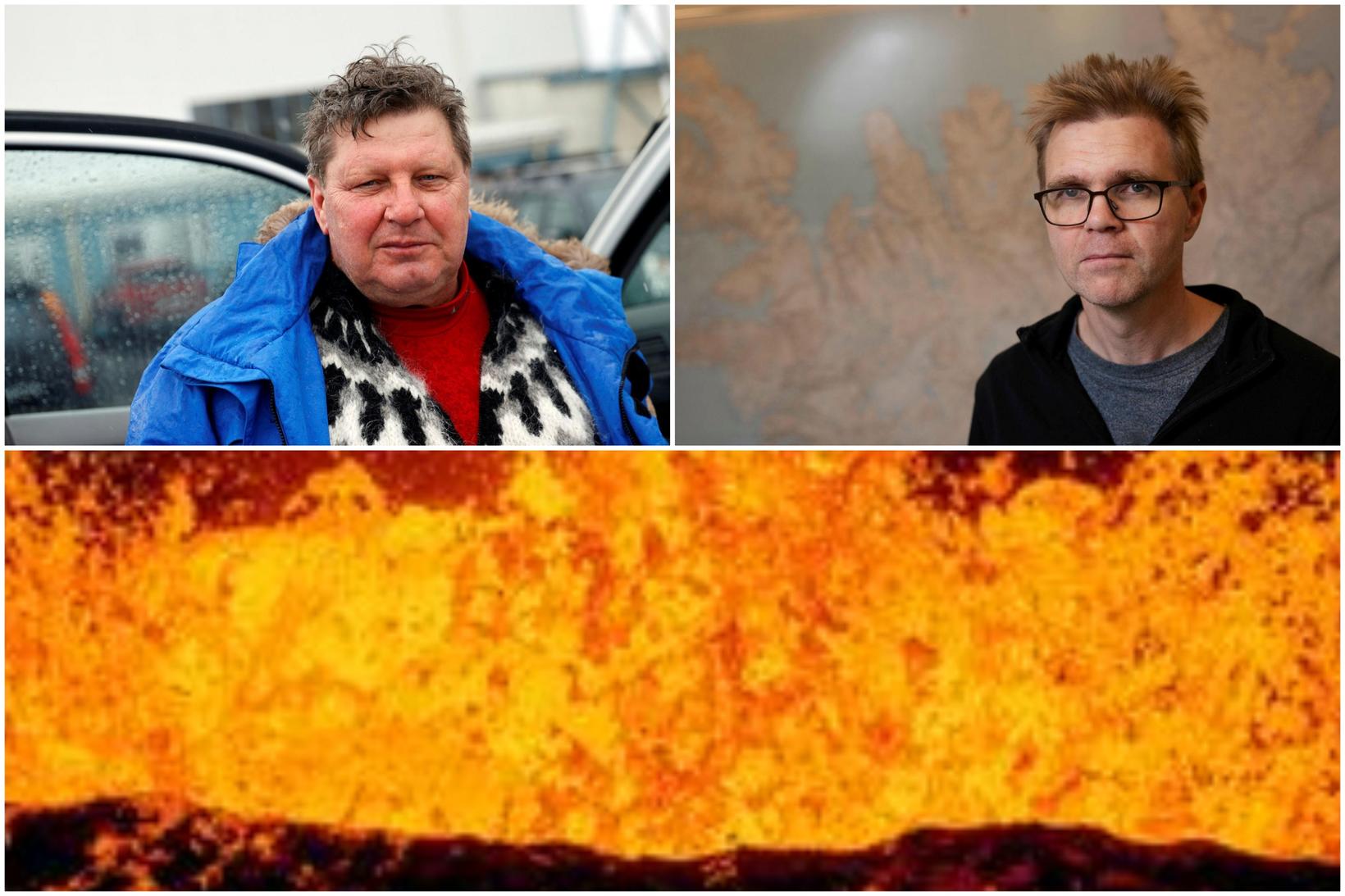The magma chamber filling up
Our experts in geophysics and volcanology have not always agreed when it comes to how things will unfold in the Reykjanes peninsula, as it is often difficult to read the data and changes are frequent. Composite image/mbl.is/Eyþór
Þorvaldur Þórðarson, professor of volcanology at the University of Iceland, believes that a volcanic eruption may resume at the Sund-hnúka crater on Reykjanes peninsula in the next few days.
He points out that the land rise decreased some hours before the eruption in December, but it’s not yet time for that. “It’s not falling yet.” If a significant deformation occurs in the Gps measurements, for example in Svartsengi, it could mean that an eruption is about to happen.
According to the Icelandic Met Office, geophysicist and director of de-formation measurements, Benedikt Gunnar Ófeigsson, it could have been a coincidence that the land rise decreased shortly fell before the last eruption.
“I wasn’t quite sure that it could be interpreted that way, it might have been a coincidence. There was only one measurement station that showed this. There is a natural fluctuation in data like this, and sometimes that fluctuation falls right into some signal, and then it looks like it’s something.
There was no noticeable precursor to the last eruption, except when the series of earthquakes started, and then there was also a deformation, which we saw very clearly in real-time. There was no great lead-up to that. At least there was nothing specific that could be used as a precursor,” Ófeigsson says.
Are we heading for the next eruption?
Developments in the last few days are similar to the events before the volcanic eruption on December 18 according to Þórðarson. The land rise in Svartsengi has increased and is now larger than at the time of the eruption and the land rise at Eldvörp is approaching the same height as last time.
“I think this is a sign that we’re really getting into one more eruption,” says Þórðarson. However, he says that there’s always the possibility of a decrease in the land rise and seismic activity means that “it’s simply burning up.”
The other scenario, which Þórðarson thinks is more likely, is that the magma chamber is filling up and reaching the limit of tolerance. “The roof and the walls of the chamber have been stretched as much as possible. It’s like stretching; if you stretch and stretch, it’s always harder to stretch as you stretch more and eventually it breaks. It could be the sign that we’re reaching this limit of tolerance. If that’s true, then we could have an eruption or some event going on in the next few hours or maybe the next few days.”
Small eruption but powerful at the beginning
Þórðarson believes that if a volcanic eruption occurs, it will be in a similar form to the one that began on December 18. It could be small overall, but powerful at the beginning. “There hasn’t been a super-high amount of magma accumulated in this shallow chamber. This is about 5-10 million cubic metres of magma, which doesn’t count as much. It might be a small, short eruption, but with a visual spectacle at the beginning.”
As for the exact location of a new eruption, he says it’s difficult to determine. It’s most likely, however, that it will erupt in similar locations as it did last time. New magma would then flow through the eruption channel that was formed in December from the magma chamber and to the surface.
“I think it’s probably the easiest way to open that channel again and magma would then move up there. If there’s magma in this eruption channel, it’s not set by any means. New magma would then find an easy way to the surface.”
Like Þórðarson, Ófeigsson believes that the next eruption will be in a short while. “It’s probably more likely, I think,” he says.










